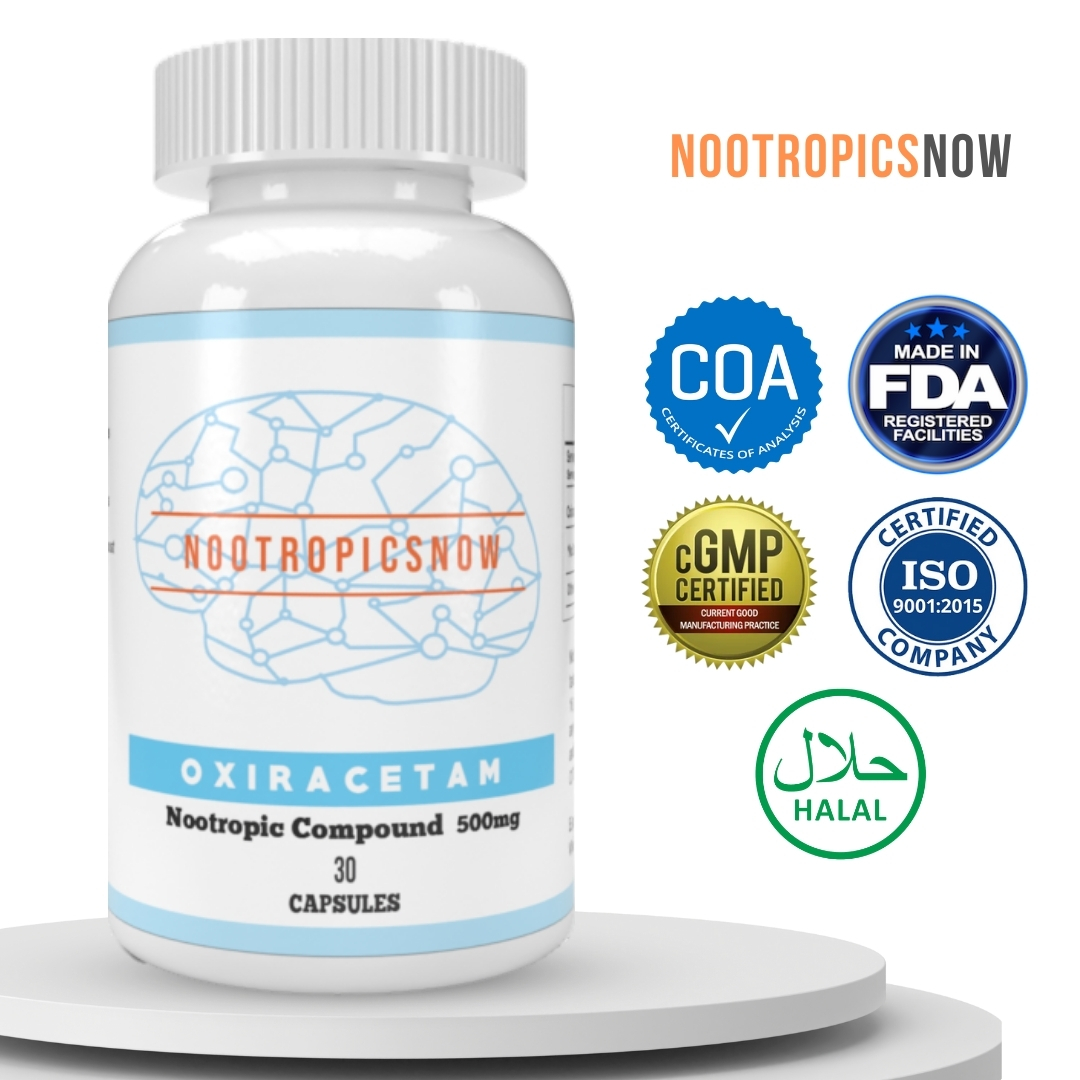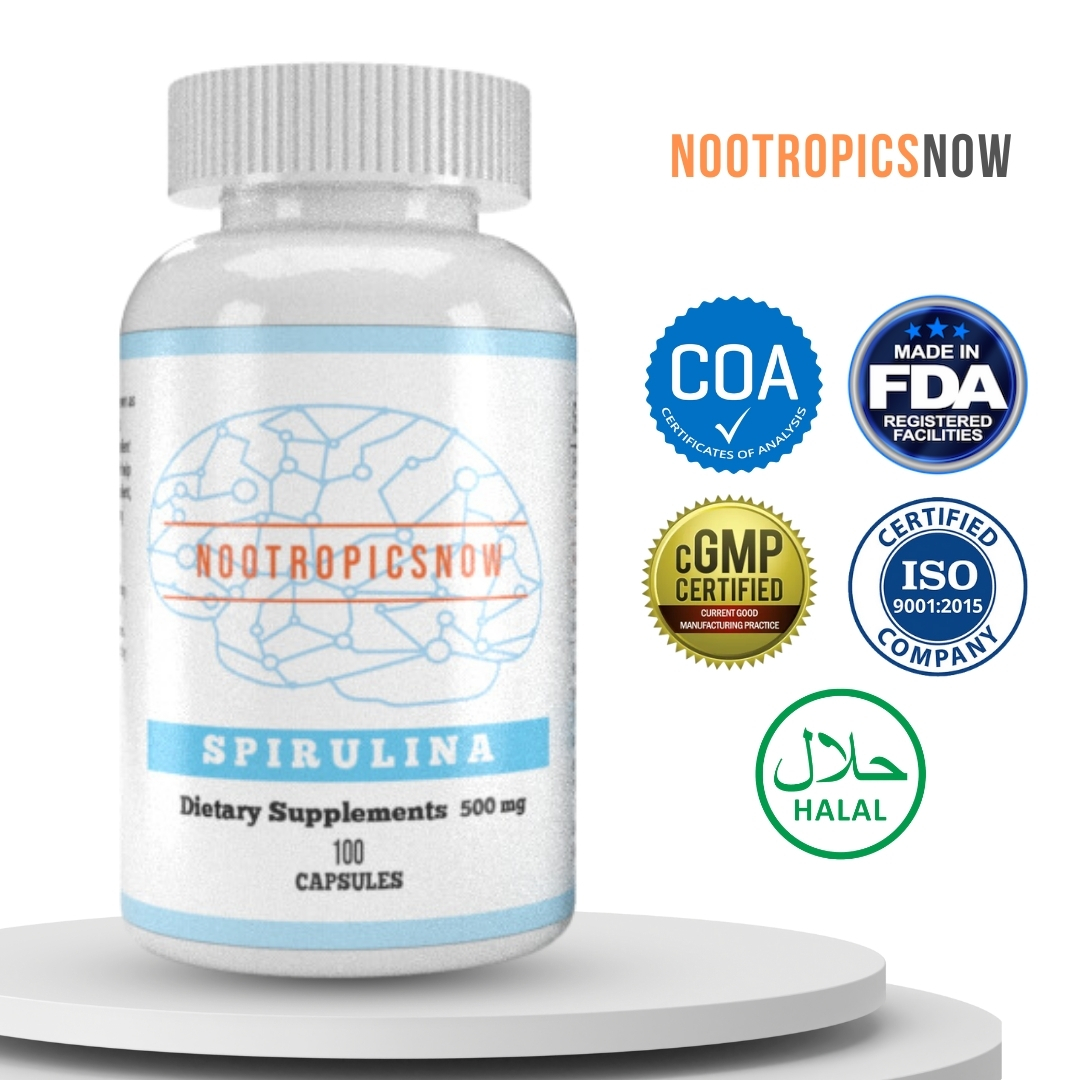Fasoracetam for ADHD: Promising Results?

Fasoracetam ADHD Study: Key Findings and Insights
Fasoracetam, a nootropic compound initially investigated for its potential in addressing vascular dementia, has emerged as a subject of interest in the context of Attention Deficit Hyperactivity Disorder (ADHD) treatment.

View Product
However, it’s crucial to emphasize that its efficacy appears to be primarily relevant within specific, genetically defined subpopulations. This section delves into the critical findings and insights derived from relevant studies, aiming to present a clear and nuanced overview of fasoracetam’s potential role in managing ADHD.
Understanding Fasoracetam’s Mechanism of Action
Firstly, understanding how fasoracetam interacts with the brain is paramount. Unlike traditional ADHD medications that often target dopamine and norepinephrine, fasoracetam primarily affects the metabotropic glutamate receptors (mGluRs). These receptors play a vital role in regulating glutamate, an excitatory neurotransmitter involved in numerous brain functions, including learning, memory, and cognitive flexibility. More specifically, fasoracetam modulates mGluR1 and mGluR5 receptors, influencing the overall glutamate signaling pathways. Additionally, it positively influences cholinergic neurotransmission through the enhanced release of acetylcholine, a key neurotransmitter for cognitive processes like attention and memory formation. This multifaceted approach distinguishes fasoracetam from more conventional treatments, potentially offering a unique angle in managing certain aspects of ADHD.
Efficacy in ADHD: Focusing on Genetic Subtypes
Consequently, a critical aspect of fasoracetam’s efficacy in ADHD lies in its apparent specificity for individuals with particular genetic profiles. Studies have suggested that the drug shows the most significant promise in individuals who have mutations within genes associated with the mGluR network. These mutations are thought to affect glutamate signaling and may underlie ADHD symptoms in a subset of the patient population. Some estimates suggest that this genetic subtype accounts for roughly 10% of all ADHD cases, underscoring that fasoracetam may not be a universally effective treatment but rather a tailored intervention for this subgroup.
Examining Clinical Trial Data
Furthermore, data from clinical trials provide crucial insights into fasoracetam’s impact on ADHD symptoms. A notable 5-week, open-label study involved adolescents with ADHD who also exhibited mutations in mGluR network genes. This study, designed as a single-blind, placebo-controlled trial, sought to assess the efficacy of fasoracetam in this specific population. Participants aged 12 to 17 years received fasoracetam, and their progress was monitored using the Clinical Global Impressions-Improvement (CGI-I) and Clinical Global Impressions-Severity (CGI-S) scales. The results revealed that fasoracetam led to substantial improvements in ADHD symptoms, as reflected in the reduced CGI-I and CGI-S scores. These improvements suggested that fasoracetam could effectively mitigate the severity of ADHD in these individuals. Specifically, mean CGI-I scores decreased from 3.79 to 2.33, and mean CGI-S scores decreased from 4.83 to 3.86, indicating a noticeable positive change during the treatment period.
Dosage and Response Relationship
In addition to overall efficacy, the clinical trial highlighted the importance of dosage. The study found that minimal doses of 100 mg administered twice daily (BID) were necessary to elicit significant improvements. Additionally, the degree of response was correlated with the presence of specific gene disruptions within the mGluR network. This observation suggests that individuals with more pronounced genetic mutations in the relevant pathways might experience greater benefits from fasoracetam treatment. This dose-response relationship underscores the importance of carefully titrating the dosage based on individual genetic profiles and responses.
Assessing the Safety Profile of Fasoracetam
Notwithstanding the encouraging efficacy findings, understanding the safety profile of fasoracetam is vital. Generally, fasoracetam appears to be well-tolerated, with common side effects being relatively mild. Headache and fatigue are the most frequently reported adverse events.

View Product
However, these side effects are typically transient and do not necessitate discontinuation of the treatment. It’s worth noting that higher doses, particularly those exceeding 1000 mg per day, have been associated with bradycardia (a slow heart rate), indicating the need for cautious monitoring when higher doses are considered. The clinical trial mentioned previously showed that the incidence of adverse events was similar between the placebo group and the active drug group, suggesting that fasoracetam, at therapeutic doses, presents a manageable risk profile.
Delving into Future Research Directions

Moving forward, further research is crucial to fully elucidate the therapeutic potential of fasoracetam in ADHD. While the initial studies provide a promising outlook, additional, larger-scale clinical trials are necessary to validate these findings and to gain a more comprehensive understanding of its long-term efficacy and safety. Furthermore, exploring the potential benefits of fasoracetam in combination with other ADHD treatments could offer valuable insights. The drug’s unique mechanism of action, which involves the modulation of cholinergic, glutamatergic, and GABAergic systems, opens avenues for potential therapeutic applications beyond ADHD, including cognitive impairments and mood disorders. Thus, future research should explore these wider applications to harness the full potential of fasoracetam.
Fasoracetam vs. Traditional ADHD Medications
While traditional stimulants like methylphenidate (Ritalin) and amphetamine (Adderall) primarily focus on increasing dopamine and norepinephrine levels in the brain, fasoracetam’s action on glutamate receptors offers a different approach. This can be particularly beneficial for those who do not respond well to stimulants or experience significant side effects from them.
Stimulants (e.g., Methylphenidate, Amphetamine):
Fasoracetam:
Dosage and Administration
Potential Benefits Beyond ADHD
The influence of fasoracetam on the cholinergic and GABAergic systems hints at its potential uses beyond ADHD, in areas such as cognitive enhancement and mood stabilization.
Cognitive Enhancement:
Mood Stabilization:
Practical Considerations for Implementation
Because fasoracetam’s effectiveness seems tightly coupled to specific genetic predispositions, genetic testing to verify mGluR network anomalies may be advisable before beginning treatment. Genetic testing can allow a more focused and individualized therapeutic strategy, guaranteeing that fasoracetam is used when it is most likely to work, hence improving results while avoiding unneeded risks and expenses.
Summarizing Fasoracetam’s Role in ADHD Treatment
In summary, fasoracetam represents an innovative strategy for treating ADHD, specifically in those with certain genetic alterations. Its unique pharmacological profile and beneficial safety features make it a fascinating topic for further exploration and potential therapeutic use. Nevertheless, its use should be founded on a thorough genetic examination and managed by healthcare experts acquainted with its peculiarities. Additional and extensive clinical research is necessary to substantiate its effectiveness and long-term safety for individuals suffering from ADHD in particular.
The Importance of Comprehensive Assessment and Individualized Treatment
Despite promising data, it is imperative to emphasize the significance of comprehensive assessment and individualized treatment plans for ADHD. Accurate diagnosis, assessment of comorbid conditions, and a thorough evaluation of genetic factors are essential. Only after a thorough evaluation can a decision be made regarding whether fasoracetam is an appropriate treatment option. Additionally, patients should be closely monitored for both efficacy and potential side effects throughout the treatment period.
Navigating the Regulatory Landscape
Currently, fasoracetam is not approved for the treatment of ADHD by major regulatory agencies such as the FDA in the United States. Its use is primarily restricted to research settings and off-label applications. It is crucial for healthcare providers and patients to be aware of the regulatory status of fasoracetam in their respective jurisdictions and to comply with all applicable laws and regulations.
Ethical Considerations
Finally, ethical considerations surrounding the use of nootropics like fasoracetam are paramount. Ensuring that the drug is used responsibly and ethically is essential, particularly in vulnerable populations such as adolescents with ADHD. Informed consent, transparent communication about potential risks and benefits, and a commitment to patient well-being should guide all decisions related to the use of fasoracetam in clinical practice.
Conclusion: Weighing the Evidence and Considering Future Possibilities
In conclusion, fasoracetam holds promise as a novel treatment option for ADHD, particularly in individuals with mutations in mGluR network genes. Its unique mechanism of action and favorable safety profile make it an intriguing subject for further research and potential therapeutic applications.

View Product
However, it is important to approach the use of fasoracetam with caution and to adhere to evidence-based practices. Additional clinical trials are needed to fully validate its efficacy and long-term safety, and its use should be guided by comprehensive assessment, individualized treatment plans, and ethical considerations. Only then can the full potential of fasoracetam be realized in the management of ADHD.
Fasoracetam ADHD Study: Key Findings and Insights
Fasoracetam, a nootropic compound belonging to the racetam family, has garnered considerable attention for its potential cognitive-enhancing properties and its potential use in treating neurological disorders.

View Product
Initially developed by Nippon Shinyaku Co., Ltd. as a potential treatment for vascular dementia, research has pivoted, and it has become a focal point in studies investigating its effects on Attention Deficit Hyperactivity Disorder (ADHD). Recent investigations provide crucial insights into the effectiveness, mechanisms, and safety profile of fasoracetam, particularly in specific subpopulations of ADHD patients. This section presents a comprehensive overview of the key findings from these studies, shedding light on its potential as a novel therapeutic agent.
Unveiling the Mechanism of Action
Fasoracetam’s mechanism of action is multifaceted, involving modulation of several key neurotransmitter systems within the brain. Primarily, it interacts with metabotropic glutamate receptors (mGluRs), which play a critical role in synaptic plasticity, neuronal excitability, and overall brain function. Specifically, fasoracetam is known to modulate mGluR5 receptors. These receptors are implicated in various cognitive processes, including learning, memory, and attention. Through this modulation, fasoracetam helps to restore the balance of excitatory and inhibitory neurotransmission, potentially improving cognitive performance and reducing ADHD symptoms.

View Product
Additionally, fasoracetam influences the cholinergic system by increasing the release of acetylcholine, a crucial neurotransmitter for cognitive functions such as attention, memory, and learning. By enhancing acetylcholine levels, fasoracetam can improve cognitive performance and attentional processes, thereby alleviating some of the core symptoms of ADHD. Furthermore, research suggests that fasoracetam may also affect GABAergic neurotransmission, contributing to its overall cognitive and behavioral effects. The compound seems to modulate the GABAergic system, which is instrumental in regulating neuronal excitability and promoting relaxation.
Efficacy of Fasoracetam in ADHD Subtypes
Clinical trials evaluating the efficacy of fasoracetam in ADHD have yielded promising results, particularly in specific subpopulations of individuals with the disorder. A notable study focused on adolescents with ADHD who carried genetic mutations in mGluR network genes. These mutations are believed to disrupt glutamate signaling, contributing to the manifestation of ADHD symptoms. The study involved adolescents aged 12 to 17 years who were diagnosed with ADHD and confirmed to have these genetic variations.

View Product
The five-week, open-label, single-blind, placebo-controlled study demonstrated that fasoracetam treatment resulted in a significant reduction in ADHD symptoms among participants with mGluR mutations. Clinical Global Impressions-Improvement (CGI-I) and Severity (CGI-S) scores, which are commonly used to assess the severity and improvement of psychiatric conditions, showed substantial decreases following fasoracetam administration. The mean CGI-I scores decreased from 3.79 to 2.33, while the mean CGI-S scores decreased from 4.83 to 3.86, indicating a meaningful improvement in the overall clinical condition of the participants.
Furthermore, the study found that the degree of response observed was associated with the presence of specific gene disruptions in mGluR network genes. This suggests that individuals with particular genetic profiles may be more likely to benefit from fasoracetam treatment. These findings highlight the potential for personalized medicine approaches in ADHD treatment, where genetic testing could help identify patients most likely to respond to specific therapies like fasoracetam.
Dosage and Response Relationship
Another crucial aspect of the clinical trial was the evaluation of the relationship between fasoracetam dosage and treatment response. The study found that a minimal dose of 100 mg twice daily (BID) was required to achieve significant therapeutic effects. Doses lower than this threshold did not produce substantial improvements in ADHD symptoms. These findings indicate that achieving an effective concentration of fasoracetam in the brain is necessary to exert its therapeutic effects.
Interestingly, the study also revealed that higher doses, within the range tested, did not necessarily lead to further improvements in ADHD symptoms. This suggests that there may be an optimal dosage range for fasoracetam, beyond which increasing the dose does not confer additional benefits. Further research is needed to determine the precise dose-response relationship and to identify the optimal dosage range for different individuals based on factors such as age, weight, and genetic makeup.
Evaluating the Safety Profile
Understanding the safety profile of any potential therapeutic agent is crucial, especially when considering its use in vulnerable populations such as adolescents with ADHD. The clinical trial assessing fasoracetam’s efficacy in ADHD also provided valuable data on its safety and tolerability.
The study reported that fasoracetam was generally well-tolerated by the participants. The incidence of adverse events was similar between the placebo and active drug weeks, indicating that fasoracetam did not significantly increase the risk of side effects. The most commonly reported adverse events included headache and fatigue, which were typically mild and transient. These side effects are consistent with those reported in previous studies of fasoracetam and other racetam compounds.
However, it is important to note that higher doses of fasoracetam (above 1000 mg per day) have been associated with bradycardia, a condition characterized by a slower-than-normal heart rate (typically less than 60 beats per minute). Bradycardia can be a serious concern, particularly in individuals with pre-existing cardiovascular conditions. Therefore, it is essential to carefully monitor heart rate and blood pressure in patients receiving fasoracetam, especially at higher doses.
Future Research Directions and Clinical Implications
While the current research provides valuable insights into the potential of fasoracetam as a treatment for ADHD, particularly in individuals with mGluR mutations, further studies are needed to fully elucidate its efficacy, safety, and long-term effects. Future research should focus on several key areas:
Potential Therapeutic Applications Beyond ADHD
The multifaceted mechanism of action of fasoracetam, involving modulation of cholinergic, glutamatergic, and GABAergic systems, suggests that it may have potential therapeutic applications beyond ADHD. Preclinical studies have explored its effects on cognitive impairments and mood disorders.
Research has shown that fasoracetam can improve cognitive function in animal models of cognitive impairment, such as those induced by aging or brain injury. It may enhance memory, learning, and attention in these models, suggesting its potential use in treating age-related cognitive decline and other cognitive disorders.
Additionally, studies have investigated the effects of fasoracetam on mood disorders, such as anxiety and depression. Some research suggests that it may have anxiolytic and antidepressant effects, potentially through its modulation of GABAergic and glutamatergic neurotransmission. These findings suggest that fasoracetam may have potential in treating mood disorders, particularly in individuals with comorbid cognitive impairments.

View Product
In conclusion, fasoracetam represents a novel approach to treating ADHD, particularly in those with specific genetic mutations affecting glutamate signaling. Its unique mechanism of action, favorable safety profile, and potential therapeutic applications beyond ADHD make it an intriguing subject for further research and clinical development. However, it is important to acknowledge that current evidence is limited, and more extensive clinical trials are necessary to fully validate its efficacy and long-term safety. As research continues, fasoracetam may emerge as a valuable tool in the treatment of ADHD and other neurological and psychiatric disorders.

